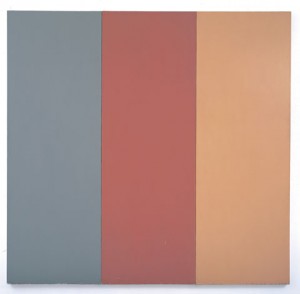Brave souls submit
 Severely rigid writer’s guidelines seem only to serve editorial anal-retentive impulses, which I sadly sometimes feel may be driving certain journals to begin with.
Severely rigid writer’s guidelines seem only to serve editorial anal-retentive impulses, which I sadly sometimes feel may be driving certain journals to begin with.
I often go to a submissions page and have to tread through 8 or so dense paragraphs of (ironically, often inefficiently written) prose about typing my last name after the word ‘submission’ followed immediately with two forward slashes and then the word count. Are they suggesting that failure to be so explicit will preclude their ability to just read the story? And what is it about including mailing address for online journals? Unless there’s some distant prospect of a printed anthology (at which point many addresses will have changed), the entire medium is exclusively virtual. Do these editors want to see if you live in a culturally viable city like New York? If so, just say so. The street number doesn’t help.
Cover letters are absurd. Writers are not ‘allowed’ to describe their story, thus left in the awkward position of either fawning over the journal, or trying to sell themselves with a list of past publications. This crap is completely useless. Just read the fucking story.
I understand that writers can be disorganized, and these editors are describing an ideal process of what can be a logistical headache, but please, try to be more intuitive and agile here. In the magic of email, the sender’s name is cited along with the email. Is it not possible to simply associate a story as originating from a particular email, one which includes the writer’s name? It just seems that if an editor is serious about publishing a story, he or she will somehow ‘figure it out,’ and if they don’t want to publish a piece, then it’s irrelevant anyways.
Perhaps more irritating is when editors ‘go off’ (usually for three paragraphs) on—not merely what they are looking for in a story, but—the moral ethics of what makes good writing in the most absolute and abstract sense. They say things like, “describe it, don’t say it.” I’ll fucking say it if I want to. I’m the writer here, you’re the editor. It’s my job to write, and your job to reject or accept it. It’s not your job to preach to a voiceless public about how to write.
For every editor, there are about 200 writers. By statistical default, editors have ‘the power.’ They should be nice, and publish what they like, and reject what they don’t. If their egos are still hungry, write them a story about a sandwich. Wait, Bukowski did that already…
October 13th, 2008 / 2:10 pm
Against HTML, Giants, and HTMLGiant
The following essay was written last Friday in preperation for Mean Week. Had its author known Blake Butthair would have employed similar rhetoric, he would have posted this earlier.
1. HTML stands for Hyper Text Markup Language, which is a euphemism for ‘gay ass effects for little bitches.’ Most common examples of ‘text markup’ are bold and italics. Whoever wrote it had some major issues, this thing for reciprocity. Every ‘tag’ needs to be closed by an ‘end-tag,’ for example:
<head>
<title>I’m a little geek bitch</title>
</head>
HTML is also homosexual, for example:
<head>
<title>I swallow cum</title>
</head>
2. GIANTS are severely retarded people with gross birth defects. Popular culture tries to render giants who are either likable (Sun Ming Ming) or martyrs (Gulliver, relative scale). Anthropologically speaking, Giants represent the first stages of human devolution. Darwinian theory is as follows (paraphrased for you goddamn plebeians): the more you can survive this hell on earth, the more you can fuck as many people you can, the more kids you’ll have who share your genetic disposition, and the more they can continue suffering and fucking. My point is: don’t fuck giants.
3. HTMLGIANT is the brain (however dense) child of Blake Butler and Gene Morgan, who are both addicted to the internet and their daily attempts to excavate the hard white bumps found on the underside of their penile shafts (which, incidentally, implicates quite well that their conditions were exchanged mutually). All of the contributing writers suffer from some sort of Excavation Fetish:
–Kendra Malone’s nightly refrigerator ‘dairy’ raids (I can’t believe it’s butter).
–Shane Jones’ public library poetry section “ejaculatory duct exodus” (to quote the librarian).
–Matthew Simmons’ nearly fatal nose picks, in which he searches for a clue.
–Justin Taylor’s quarterly Zoetrope rejection letter tear-duct hemorrhaging.
–Josh Maday’s silent-yet-strong (cough, gay) soul, spurted onto his mirror like some over ripe human-sized zit.
–Ryan Call’s eyelash plucking bonanza, in his attempt to render his face even more difficult to look at.
–Mike Young’s ‘dry yet emotional acoustic song’ plopping out of his guitar hole and mouth.
–Last and least, Sam Pink’s annual anal-outcome, in which all the shit that’s been crammed up there by his teenage blogger friends finally leaks out, surely the year’s most translucent and anti-climactic creampie.
And as for you, dear reader. Holy. Fuck.
Nobel Prize in Literature
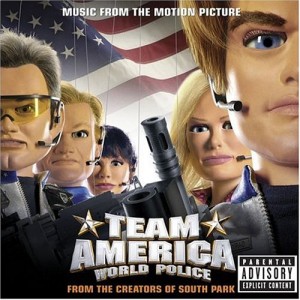
I know we are supposed to be talking about ‘indie-lit,’ and that the Nobel Prize in Literature is on the other end of the spectrum, but there is some relation: a new disfranchisement.
The prize was announced today to Jean-Marie Gustave Le Clézio (what a name! Where’s your hyphen and accent mark Philip Roth?), who most of us haven’t heard of. From this article in The Independent:
The Nobel literary committee today infuriated the bookies, delighted the bookish and thumbed its nose, again, at the American book industry. The 2008 Nobel Prize for literature was awarded to Jean-Marie Gustave Le Clézio, a half-British French novelist and philosopher, who lives in America and champions the “lost” wisdom of non-Western cultures.
The last American to win the prize was Toni Morrison fifteen years ago in 1993 (it’s odd, and pleasant that our national representative is a black woman). I don’t want to talk about politics. I just have some questions: is the American psyche becoming more obsolete under a global consciousness? Are we being symbolically punished for our foreign policy transgressions by a globally progressive institution? Or do we just suck? (By the collective ‘we’ I mean Americans, even though I’m Canadian.)
Pynchon and Salinger are burying their food in the woods. DFW is dead. John Updike can’t stop writing about his dick. If American lit has something to say, what is it?
Literature Rules
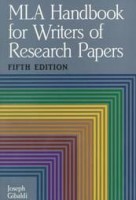
Literature does rule, but I was talking about the rules. Here are some nice websites with implicit publishing parameters, along with examples of my own.
[Example]: The autistic free-style rapper kept on saying ‘word’, like this: Word. Word. Word. Word. Word. Word. Word. Word. Word. Word. Word. Word. Word. Word. Word. Word. Word. Word. Word. Word. Word. Word. Word. Word. Word. Word. Word. Word. Word. Word. Word. Word. Word. Word. Word. Word. Word. Word. Word. Word. Word. Word. Word. Word. Word.
[Example]: The autistic goth kept on saying ‘the world is a vampire,’ like: the world is a vampire, the world is a vampire, the world is a vampire, the world is a vampire, the world is a vampire, the world is a vampire, the world is a vampire, the world is a vampire, the world is a vampire, the world is a vampire, the world is a vampire, the world is a vampire.
[Example]: John wrote a sentence. This was the sentence. Then, he google imaged ‘ass’ and encountered two types of photos. The first was people’s buttocks. The second was donkeys. There was no third.
[Example]: Once upon a time, John Cage wrote a story.
[Examples]: extremely abridged versions
Story 1: Gatsby loved, the world hated.
Story 2: Leopold Bloom had a nice day (not exactly).
Story 3: Mrs. Dalloway and menopause.
Story 4: Portnoy complained.
Story 5: Lolita gave good head.
Story 6: Kurtz, he dead.
Story 7: Anna Karenina, she dead.
Story 8: Gay boys on the beach, blowing.
Story 9: RSVP, Godot. Not.
Story 10: Two cities, fucked.
Story 11: K., fucked.
Story 12: Arab on the beach, fucked.
October 8th, 2008 / 4:42 pm
Intelligent Design
An article published by The Chronicle of Higher Education discusses online ‘literacy traits,’ put simply, the lack of reading online. Myspace and facebook have turned the human race into a thumbnail. Of course, those of us here are in the old fashioned business of words—being writers, editors, and avid readers.
I will admit, I need to be somewhat invested in the prospects of reading a piece over 1500 words to print it out and read. My onscreen limit is usually under 1500 words. I’m occasionally frustrated when I can’t print out a story due to the web-file’s printer constraints. This got me thinking about various aesthetics of online journals—how editors/designers deal with not just internet’s short attention space, but the visual encounter with text, as the latter effects reader’s tolerance.
Seeing white words on a black background induces dizzy spells. It’s like looking into a congested night full of large ass stars. I much prefer when the words are deeper in tone on the gray scale with a black background. The classic black words on white is somehow the logical default to mimic the printed page, though I find black words on muted backgrounds (Hobart, Pindeldyboz, Juked) a little easier on the eye.
Margins are also a big deal-breaker for me. When there are no margins, and each paragraph stretches across the screen, it looks like some diaspora of abandoned words. In the end, you need to either mimic the printed page, or invent an aesthetic conducive to the screen.
This brings me to Bear Parade from our own Gene Morgan, and as of late, Lamination Colony by our own Blake Butler.
Bear Parade’s design IS the internet. It doesn’t need to mimic the printed page—in fact, it exploits the very qualities only possible on screen. Most of the stories in Bear Parade employ a ‘triad of tone’: 1) background color, 2) text color, and 3) rollover link color. The last one (3) seems almost incidental, but it’s a little blessing each time I rollover. It completely seals the context of the other two tones. Morgan is a rare colorist and designer; his choices are humble, sophisticated, and—perhaps most importantly—embody the tone of the story itself. In Small Pale Humans, readers might (just might) discover the faintest silhouette of a cactus, as if seen under the dimmest moon. Morgan tells a story with mere tone. He puts the zing in amazing.
Lamination Colony’s concerns are not so much about color (though the template light purplish page is deft) but self-conscious placement of text and imagery. The Woman Down the Hall is one of the most beautiful artifacts online. Each transition (the closest word I can summon to describe a ‘chapter’ in e-book scale) is an epiphany. Butler introduces a cinemagraphic element to journal design: fragmented and uncanny visual narratives—an intuitive evolution, given his self-professed Lynchian tendencies. My favorite transition is when an old woman’s face is followed by an extreme close up of the face. Butler draws the reader in closer, deeper. In another part, a small sentence is wrapped around like an egg, positioned perfectly on top an ominous source of light. Text also wraps around teeth. The guy is mad.
Some of you may accuse me of ingratiating myself to the editor and designer of this website. To that I say: I would say such things even on a desert island, holding a coconut, and looking for a bowling alley.
October 7th, 2008 / 2:36 pm
THE NEW BLURRY PHOTOGRAPH
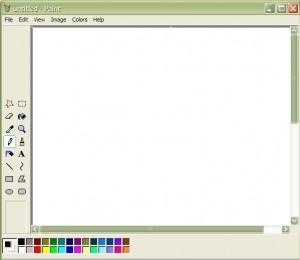
It may have started, as many internet-lit things seem to do, with Tao Lin. His drawings of weird animals rendered from Microsoft Paint are endearing and comical. That the Adobe platform (illustrator/photoshop/indesign) is not employed is what I call ‘guerrilla pixel-dom’—crude, design-unfriendly, kitschy in a Bill Gates kinda way. Such aesthetic seems to be propagating. Enter Mike Bushnell and our own Sam Pink.
Mr. Pink, sans Reservoir Dogs, is, um, an interesting character. He brings us an adolescent violence that, constrained in its virtual medium, is benign and somehow charming. Looking at this blog, I don’t know whether to become aroused or duct tape my penis to my perineum for safety.
Mr. Bushnell, of face warpaint fame, is, um, an interesting character. His drawings of anthropomorphic creatures, while not necessarily violent, are of vehement temperament. Yes, Jean-Michel Basquiat tread such ground in the 80’s, but in oils.
Just what are these guys saying? Tao Lin, a master of quick-witted sayings that evoke complex existential quandaries, brings us ‘sad pterodactyl living a life of fear and anxiety’ and ‘elderly obese frost bitten squirrel’, among many others.
Pink and Bushnell’s drawings seem reactionary, void of the deep—yet somehow self-effacing—sadness that is Tao Lin. Maybe they are on to something different, and the comparison is unfair. I’m humored by all three gentlemen, all whom make me want to duct tape my penis to my perineum for safety. (For Tao, I’d use organic hemp tape.)
When one saw a blurry black-and-white photograph, one knew poetry was coming. Every journal had some BW photo of some chick’s shoulder up close, or some tree’s shadow. Blurry photo meant poetry.
Now, for some, a fucked up MS paint drawing means poetry. Are we cruder? younger? of binary soul? or just bored?
While supplies last.
A JPEG PAINTS 1000 WORDS
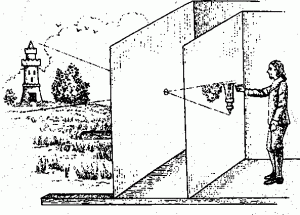
The photos which accompany Pequin’s stories are always stunning, and as much as I advocate the breadth of words, I think they augment the stories.
Steven Coy (editor) has explicitly cited Lee Klein’s eyeshot for the image per text inspiration, the latter whom understandably didn’t cite New Yorker for having always done the same. In the New Yorker, the pairing of image and story seems conceptually unconscious. (I’m sure the politics of publishing both story and image takes precedence over any editorial ideology, if any, concerning the pairing.)
Eyeshot’s photos are quirky and playful, but they are somewhat detached from the story itself, and celebrated more for their inherent attributes. Coy is onto something different here. The photos at Pequin act as a kind of surrogate or residual ‘scene’ for/from the story; either that, or as a clever visual pun.
For example: Dream Date, about a not-so-great boyfriend and his girlfriend’s unmet needs, is accompanied by a scene looking down a pink stairwell into a dark hallway, a composition which shares the orientation of a woman’s spread legs. There’s even a light bulb (anatomically consistent) which supposes a clitoris.
In Animal Parade, a story about the mishaps of taking a wrong exit on the freeway, the image is of freeway periphery (cinderblock walls, telephone polls, fastfood signs, etc.). The photo has a way of snapping into POV function, embodying the view of characters in the story.
Per Pequin’s writer’s guidelines, stories are to be under 1000 words (ideally exactly 1000 words). Coy seems hell-bent on toying with the whole ‘picture paints a thousand words’ thing. Good for him, and good for us.
October 2nd, 2008 / 3:40 pm
Ad lib, stress out
 Up for a quick challenge? Go to oneword. You’ll have 60 seconds to write a story based on a random word prompt. No editor*, so instant publishing success!
Up for a quick challenge? Go to oneword. You’ll have 60 seconds to write a story based on a random word prompt. No editor*, so instant publishing success!
It’s nice to see Oulipo constraints applied in this internet age. Back in the ol’ days, you’d need a stop-watch and someone with a large fist to knock you out.
*Thus, not exactly the most refined writing, but that’s where YOU come in. Just don’t freak out, like I did.
October 1st, 2008 / 2:47 pm
The daily obsessions of Mark Baumer
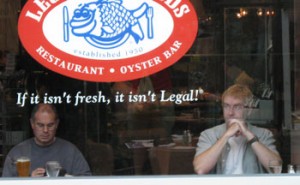
Mark Baumer’s everydayyeah chronicles (among author interviews, short fiction, misc.) with a new photo posted every day, inscriptions of the words EVERY DAY YEAH on practically anything imaginable: gumdrops, mattresses, crosswalks, pasta, etc. Part of the thrill is seeing what he comes up with—the sometimes imprudent terrains (i.e. public property, high altitudes, heavy traffic, etc.) on which he writes the words, and the orientation of the words (sometimes they are written in different places and only come together to form the phrase at a certain perspective. It’s a hefty commitment, not just of time, but of creative mental energy. Each incident is fresh, peculiar and intuitive.
I always ask myself, “where the hell is he taking these pictures?” (Let’s just say the guy gets around.) Many of the photos remind me of Where’s Waldo or the hidden bunny on the Playboy covers, as one often needs to search around before finding the phrase. Baumer, who seems highly in control of his own aesthetic, is probably doing this on purpose.
Another Baumer creation is Best Friends: photos of complete strangers (or light acquaintances at best) caught in an unlikely incidence of quasi-romanticism—at least through Baumer’s eyes. Of course, the appropriations are sarcastic, yet there’s a hint of solemnity—a certain loneliness conveyed, from not just the subjects, but the voyeur Baumer himself. He seems to always be looking, seeking comfort in the awkward spaces between limbs, averted eyes, and pending smiles.
Every day, every day. Yeah, yeah. I wouldn’t worry about OCD for Baumer, just server space.



